The Allure of “The Allure of Battle”
The Limits of Attrition and the Necessity of Tactical Brilliance
Cathal J. Nolan’s The Allure of Battle: A History of How Wars Have Been Won and Lost is a formidable work of historical revisionism.1 In a sweeping narrative that ranges from antiquity to the mid-twentieth century, Nolan offers a scathing critique of one of military history’s most persistent myths: that wars are won by decisive battles and the tactical genius of commanders. It seeks not merely to reinterpret events but to dismantle a mode of historical thinking that has dominated for centuries. According to Nolan, victory in war rarely results from bold maneuvers or tactical brilliance. Rather, it emerges from long, grueling campaigns in which logistics, industrial capacity, and national endurance matter far more than battlefield valor.
My introduction to military history came in middle school through John Keegan’s classic book, The Face of Battle and R.G. Grant’s Battle: A Visual Journey Through 5000 Years of Combat.2 The latter of which was such a constant companion on the bus, in school, and on vacations that it literally fell apart, spine and all. So, when I encountered Nolan’s The Allure of Battle in college, its thesis struck with particular force. It raised an unsettling question: had I been approaching the study of military history all wrong from the very beginning? Did battle not matter at all? Was tactical brilliance and command useless?
Nolan’s central claim is that the “decisive battle” is a myth, and a destructive one. He defines “decisive battle” as, “singular victories or defeats that created lasting strategic change, leading directly or ultimately to the decision in the war that framed them.”3 While historians have long celebrated moments like Cannae, Agincourt, Austerlitz, Gettysburg, Midway, or Stalingrad, Nolan argues that these engagements rarely settled anything. The idea that a single battle can deliver a strategic victory, in his view, is a fantasy born of cultural longing and intellectual laziness. One of the classic quotes quoted by “decisive battle” skeptics comes from the historian Edward Gibbon (1737-1794), who famously wrote of the Battle of Tours in 732 AD:
A victorious line of march had been prolonged above a thousand miles from the rock of Gibraltar to the banks of the Loire; the repetition of an equal space would have carried the Saracens to the confines of Poland and the Highlands of Scotland; the Rhine is not more impassable than the Nile or Euphrates, and the Arabian fleet might have sailed without a naval combat into the mouth of the Thames. Perhaps the interpretation of the Koran would now be taught in the schools of Oxford, and her pulpits might demonstrate to a circumcised people the sanctity and truth of the revelation of Mahomet.4
Later historiography has revealed that the battle was more or less a skirmish, and it is unlikely that the Umayyad army would have marched across Europe, but the mythos of the battle lasted far longer than reality.
While the historiographical tradition of the “decisive battle” has its roots in the military thought of the 17th and 18th centuries, particularly in the age of linear warfare and dynastic conflict, it has endured well into the modern era, albeit among a smaller and more ideologically distinct group of historians.5 For example, Victor Davis Hanson has continued to champion the notion that Western civilization has been repeatedly preserved through a series of singular, climactic engagements, from Marathon to Tours to Midway.6 This view tends to elevate battlefield outcomes to the level of civilizational judgment, often at the expense of context, contingency, and the broader forces that shape the course of war. While mainstream military historiography has shifted toward more structural, long-term explanations of victory and defeat, the residual tradition of glorifying decisive battles persists in popular writing and strategic commentary, underscoring just how deeply entrenched the myth remains, even in the face of contrary evidence.
Nolan argues that battlefield victories, particularly “decisive ones,” may capture attention, but the fundamental determinants of victory are found elsewhere: in manpower reserves, logistical networks, economic output, and political will.7 This inevitably leads wars to drag out over years, only ending when one or both sides have exhausted all their available military power. This argument, while not entirely novel, is advanced with a rare degree of intensity and erudition.8 Nolan is not content to call attention to the limits of tactical engagements. He insists that our obsession with them, as seen in the work of historians, policymakers, and the public, has led to strategic disasters and needless slaughter. His project is as much a cultural critique as it is a scholarly one, aimed at dismantling what he sees as the romanticization of war itself.
Nolan more or less applies this framework to every case study he uses, from the Hundred Years' War to the Thirty Years' War, to the Seven Years' War, and on to the industrial wars of the twentieth century, further reinforcing his thesis. However, despite its insights, The Allure of Battle remains a flawed work. By broadening the temporal lens, Nolan shifts our attention away from the immediate impact of individual commanders, singular victories, and even discrete wars. As the historical time horizon expands, these once-celebrated moments begin to lose their centrality; they appear less as turning points and more as transient episodes within larger processes of political endurance, economic mobilization, and systemic attrition.
The Second Punic War offers an early and often misread example of the tension between tactical brilliance and strategic outcome. The Carthaginian general Hannibal’s masterful encirclement and destruction of a Roman army at Cannae in 216 BCE, during the Second Punic War, remains a staple of military academies and operational theory, rightly admired for its precision and decisiveness at the tactical level.9 Yet despite this catastrophic loss, Rome did not surrender. Instead, it absorbed the defeat, reconstituted its forces, reformed its command structures, and methodically ground Carthage into submission over the following decade. Cannae may have been a tactical masterpiece, but in Nolan’s view, it failed to produce a strategic effect and may have even prolonged the war by deepening Roman resolve.10
Yet while Nolan’s analysis rightly identifies the primacy of endurance and state capacity, it risks downplaying the continued relevance of tactical skill. Rome’s eventual victory was not simply a product of outproducing Carthage; it was also made possible by decisive military action at Zama in 202 BCE, where the Roman commander, Scipio Africanus, defeated Hannibal in a conventional field battle through superior maneuver and tactical adaptation.11 Nolan concedes the battle was a “coup de grace” but that Zama was simply the endpoint of Hannibal’s failure to translate any of his tactical successes at Trebia, Lake Trasimene, and Cannae into a strategic success, all the while Rome was slowly grinding Carthage’s financial and overseas colonies into submission.12 However, herein lies the deeper problem with purely economic or attritional theories of war; while material production and large amounts of human capital are critical, they are not self-executing. You can manufacture an infinite number of equipment, logistics, and weapons, but unless your forces are capable of using those items effectively against the enemy in battle, strategic mass becomes inert. In other words, winning a war of attrition still requires winning battles.
Nolan’s treatment of Napoleon is one of the more contentious aspects of the book, particularly in how he collapses the entirety of the Napoleonic era into a single, undifferentiated narrative of overreach and eventual attrition. This analytical flattening misses key distinctions. There were not simply “Napoleonic Wars,” but rather seven distinct conflicts, each shaped by different coalitions, political aims, strategic dilemmas, and operational contexts.13 The early campaigns, from Italy to Austerlitz to Jena, demonstrated a blend of military innovation and political disruption that yielded strategic results and could undoubtedly be defined as “decisive battles.” It was not until later, particularly with the Peninsular War and the 1812 invasion of Russia, that Napoleon’s approach devolved into unsustainable escalation and self-defeating overextension. By treating Napoleon’s career as one long trajectory of failure masked by tactical brilliance, Nolan obscures the contingent nature of early French successes and the adaptability of Napoleonic warfare across different theaters. Napoleon’s victories at Austerlitz and Jena did achieve genuine political objectives at the time, unlike the more pyrrhic engagements of his later years at Borodino, Leipzig, and the Six Days' Campaign. To ignore these distinctions is to miss how Napoleon’s effectiveness evolved and declined over time, and how his early campaigns offered a genuine, if temporary, alternative to the grinding logic of attrition that would eventually consume his empire.
In the First World War, no battle, regardless of its scale or carnage, could overcome the deadlock imposed by modern firepower and mass mobilization, which, as Bernard Brodie observed, “destroyed the real fruits of victory in the pursuit of the mere symbol of victory.”14 The German victory at Tannenberg, the Allied stand on the Marne, the offensives at Verdun and the Somme all failed to bring the war to a conclusion.15 Strategic inertia reigned. The decisive element was not tactics, but attrition: the slow grinding down of enemy capacity through blockade, exhaustion, and collapse. The Second World War followed a similar pattern, despite greater mobility and more decisive theaters. Germany’s tactical brilliance in 1939–41 was real, but its defeat was preordained once it took on a combination of enemies with vastly superior industrial and demographic depth.16 Nolan’s emphasis on logistics and endurance is especially valuable in this context. He reminds readers that wars are not won by maneuver alone. They are won by shipping tonnage, fuel stocks, artillery shells, and trained replacements. The Normandy landings, often viewed as a tactical triumph, were possible only because of Allied logistical mastery.17 Likewise, the Soviet Union’s eventual dominance on the Eastern Front owed less to Zhukov’s genius than to the relocation of industry east of the Urals, the enormous manpower of the Red Army, and the capacity to absorb casualties that would have shattered any Western army.18
Yet even as Nolan exposes the limitations of tactical victory, he risks dismissing its importance altogether. For example, Frederick the Great’s military career provides a counterpoint to the notion that tactical brilliance is irrelevant in wars characterized by attrition. During the Seven Years’ War (1756–1763), Frederick found himself in a precarious strategic position, surrounded by a coalition of materially superior enemies: Austria, Russia, and France, who vastly outmatched Prussia in terms of manpower and resources. By any conventional metric of war-sustaining capacity, Prussia should have been crushed. Yet Frederick’s repeated tactical ingenuity on the battlefield, including stunning victories at Rossbach and Leuthen, disrupted coalition coordination, preserved Prussian morale, and bought time for the political conditions to shift in his favor. His ability to strike quickly, concentrate force, and outmaneuver larger armies allowed him to punch above his weight and avoid complete encirclement. Ultimately, it was not victory in the attritional sense that saved Prussia, but rather Frederick’s capacity to endure the war long enough for Russia to exit the conflict following the death of Tsar Elizabeth. While it is true that most wars conclude when one side exhausts its resources, a central way to accelerate that exhaustion is through effective and repeated battlefield defeats. Tactical success is not incidental to attrition; it is often the mechanism that drives it. In this case, tactical brilliance did not deliver a strategic decision, but it did forestall defeat in a war of exhaustion. Frederick’s survival illustrates that while attrition may define the long arc of modern war, battlefield excellence can still exert decisive influence by shaping the conditions under which attrition unfolds.
This treatment extends to other battles he highlights, like the Battle of Britain or Midway in World War II, borders on reductionism. These engagements did not win the war by themselves, but they had profound effects on its trajectory.19 Midway not only destroyed Japan’s carrier strength but also irreversibly shifted the strategic initiative in the Pacific, a shift from which the Japanese never truly recovered.20 The Battle of Britain preserved Britain as a base for Allied operations, denied Hitler air superiority, and allowed the war to continue.21 Nolan’s categorical dismissal of “battle-centric” narratives also ignores the extent to which tactical outcomes and strategic conditions are intertwined. Stalingrad did not win the war for the Soviets, but it did break the Wehrmacht’s aura of invincibility and inflict irreplaceable losses.22 Similarly, in the American Civil War, battles such as Vicksburg, Atlanta, and Cedar Creek had clear strategic consequences: opening the Mississippi River, disrupting Confederate logistics, and contributing to Lincoln's reelection.23 Nolan tends to downplay these linkages, favoring a dichotomy between myth and reality that leaves little room for nuance.
What Nolan is actually getting through his case studies is that tactical brilliance usually cannot compensate for the decision of states to fight one or multiple larger adversaries. In other words, effective military policy cannot pay for poor political policy. From Carthage to Prussia, and Germany’s decisions in both world wars to engage in multi-front conflicts against opponents with vastly greater industrial and manpower reserves, illustrate this fallacy. Despite early tactical victories in France in 1940 or Russia in 1941, German planners misjudged rapid battlefield success as a sign of long-term strategic viability. These victories created a powerful illusion: that superior doctrine, speed, and maneuver could compensate for underlying material inferiority. The result was a series of campaigns that dazzled in the short term but collapsed under the cumulative pressures of attrition, overextension, and logistical exhaustion. Tactical victories, particularly against unprepared or disorganized adversaries, can obscure the structural imbalance that ultimately determines the war's outcome. In this sense, they are not just misleading; they are strategically corrosive. Nolan is right to draw attention to this recurring pattern, but what matters is not merely that decisive battles fail; it is that tactical success often reinforces flawed strategic choices by masking the very disadvantages that attrition later reveals.
The most straightforward way for a state to mitigate the disadvantage of facing larger or better-resourced adversaries is either to form strategic partnerships that help balance those disparities or, more prudently, to avoid the conflict altogether. Coalition warfare, balancing alliances, and deterrence are the traditional tools of statecraft for precisely this reason. Yet, history repeatedly shows that these options are not always available, palatable, or politically feasible. National pride, ideological commitments, or the illusion of military superiority can override restraint. In such cases, militaries with fewer resources often fall back on what they can control: tactical excellence. Operational doctrine, maneuver warfare, and elite fighting formations become the default solutions to strategic problems that cannot be solved by force alone. This reflexive reliance on tactics as a substitute for mass, particularly in resource-poor or geopolitically isolated states, represents what Nolan implicitly critiques throughout The Allure of Battle. The military institution, facing the impossibility of matching adversaries in terms of production or manpower, places faith in shock, initiative, and cleverness. Yet, this tactical overcompensation cannot halt the relentless logic of attrition. It only delays the reckoning. Nolan’s work highlights this recurring historical pattern: when strategic mismatch is ignored or denied, war becomes a contest of operational illusion against material reality, and the latter always wins in the end.
Additionally, there is the issue of actually reading and interpreting the book. For example, one review by The Daily Beast framed the thesis as a “frontal assault on Clausewitz’s domination of the way Westerners think about war.”24 But this is a flawed interpretation, not least because it misrepresents Clausewitz himself; an all-too-common occurrence that serious students of his work seem doomed to correct forever.25 Far from celebrating decisive battle as the singular path to victory, Clausewitz’s writing and ever-present book, On War, is a dialectical study of how war intersects with politics unfolding amid uncertainty, friction, and chance. This is partly why On War is so frequently quoted yet widely misunderstood; it is a complex and often contradictory text, especially when Clausewitz writes something to the effect of, “war has a grammar of its own, but not its own logic.”26 He meant that while war may follow internal rules: tactics, maneuvers, operational methods, it is ultimately subordinated to political purpose. Clausewitz warns that to mistake the grammar for the logic is to confuse means with ends, a conceptual error that invites strategic failure. It’s why Clausewitz was so innovative; while everyone at the time was running away from the connection between politics and war, he was running to it.
Yes, Clausewitz wrote, “Direct annihilation of the enemy's forces must always be the dominant consideration,” emphasized attacking the enemy’s “center of gravity,” and praised the brilliance of tactical command.27 But he also stated, “the vast array of factors, forces, and conditions in national affairs that are affected by war. No logical sequence could progress through their innumerable twists and turns as though it were a simple thread that linked two deductions.”28 In other words, Clausewitz warned of the “fog of war,” uncertainty, and the role of chance would always frustrate attempts to reduce warfare to formulas or single moments. He repeatedly emphasized that there are no independent variables in war, that no action occurs in isolation, because each action results in a reaction, thereby frustrating any attempt to calculate the outcome. But Nolan simply dismisses this as a “crisis of contradiction” and “dogma” rather than someone whose views evolved with age and experience.29 The German historian Hans Delbrück, writing as early as 1881, argued that had Clausewitz lived to complete his revisions of On War, he would have given far greater attention to the strategy of attrition (Ermattungsstrategie) that defined eighteenth-century warfare and the campaigns of Frederick the Great, in contrast to the strategy of annihilation (Vernichtungsstrategie) epitomized by Napoleon.30 To dismiss these tensions is to overlook the intellectual rigor and strategic humility Clausewitz brought to bear on the complexities of war, reducing a philosophy shaped by uncertainty into a caricature it never truly was.
Another key Clausewitzian insight is that war resembles action in a resistant medium, where the relationship between input and outcome is non-linear.31 Actions must be exaggerated simply to approximate their intended effect. This is why Clausewitz emphasizes the necessity of aiming at the destruction of the enemy’s ability to resist, not because such an outcome is guaranteed, but because only by aiming high can one ensure that even failure yields meaningful attritional results. By seeking a decisive battle, a commander positions themselves to exploit any unexpected success while at the very least inflicting cumulative damage. Conversely, aiming lower not only reduces the chance of seizing strategic opportunities but risks falling short of even modest objectives, especially when facing an enemy determined to destroy you. This is not a blind endorsement of decisive battle but a condemnation of mediocrity and half-measures: war is so demanding that merely achieving adequacy requires extraordinary effort. The Prussian defeat at Jena in 1806 offers an example. Despite having a nominally battle-ready force of 220,000 men, “only half were actually present and ready for the most decisive conflict in which they would ever have to fight.”32 Strategic reserves were held back, garrisons prioritized, and forces dispersed across Polish territories, all measures that proved irrelevant once the main battle was lost. The effort to hedge, preserve, and ration force ended in catastrophic defeat, proving Clausewitz’s deeper point: in war, failure often comes not from overreach but from undercommitting at a precise moment.
Furthermore, that avoiding battle can be a legitimate, even superior, strategy is made clear in Clausewitz’s reflections on Napoleon’s 1812 invasion of Russia. He observes the irony that although “in every battle the French are victorious; in each they are allowed to achieve the impossible,” the cumulative result was catastrophic: “the French army has ceased to exist, and except for failing to capture Bonaparte and his general staff, the campaign was the most complete success.”33 He praised the Russian ability to conduct a strategic retreat and exhaust the enemy through depth and endurance, writing that “in Russia one could play hide and seek with the enemy, and by always retreating might in the end return to the frontier together with him.”34 Clausewitz even called the unplanned Russian strategy “the highest wisdom,” a backhanded compliment meant to underscore that a strategy of evasion can succeed precisely where repeated engagements might fail.35 Yet it is equally important to note the underlying critique: the Russians, in Clausewitz’s view, achieved this outcome despite themselves, not because of a clear design. He faults them not for cowardice, but for being unable to fully resist the allure of battle.36 In this sense, Clausewitz's analysis does not oppose battle outright but treats its political utility and necessity with deep ambivalence, valuing restraint as much as boldness, and always in relation to the broader political objective.
Nolan rightly critiques those who elevate tactical brilliance above strategic context, but in doing so, he risks committing a mirrored error: dismissing the grammar of war, the operational and tactical dimensions, as if they have no influence at all on the logic. In focusing so heavily on attrition and endurance, Nolan sometimes marginalizes the battlefield itself as a consequential space, when in fact Clausewitz understood that it is precisely within the grammar of war that politics is played out in a much more dangerous way. Rather than offering a genuine critique of Clausewitzian theory, Nolan’s work might be better understood as a refutation of a bastardized Clausewitz: the version filtered through Jomini, Liddell-Hart, the American Professional Military Education system, and the cult of operational art that emphasized battle as the primary engine of war.37 But that is not Clausewitz’s fault. In truth, Nolan and Clausewitz are often aligned in their emphasis on war as a political act requiring endurance, cohesion, and the prudent matching of means to ends.
The cultural critique embedded in The Allure of Battle may be its most original and provocative dimension. Nolan’s premise that combat is often a waste of lives, time, and national resources presents a compelling alternative framework for those skeptical of war, especially battle. However, for those in or around the military profession, his thesis is likely to provoke discomfort, if not outright resistance. Nolan contends that the myth of decisive battle endures not because it reflects historical truth, but because it fulfills a powerful cultural need. Societies want to believe that war is noble, manageable, and shaped by individual agency. Battles offer clean narratives, iconic heroes, and the illusion of resolution. Attritional warfare, by contrast, yields only ambiguity, tragedy, and institutional endurance.38 This is why popular memory, from war films to popular books to school textbooks, privileges battlefield moments over the slower, structural forces that actually determine outcomes. Nolan is right to challenge this distortion. However, whether historians alone can meaningfully disrupt such deeply embedded ideas remains an open question.
The Allure of Battle largely succeeds not because it is flawless, but because it is forceful. It reminds readers that war is not waged in a vacuum, and that decisive moments are often illusions when viewed in isolation from the broader context of conflict. Nolan’s emphasis on attrition, logistics, and national will is a bracing antidote to the easy triumphalism that continues to pervade strategic thought. If nothing else, the book should force policymakers to abandon the fantasy of short, cheap, and surgical wars. Ultimately, Nolan offers a kind of moral realism. His book is not anti-military but anti-delusion. It does not reject the study of battle—it rejects the idea that battle, in itself, solves anything. By challenging the allure of battlefield clarity, Nolan demands a more sober, honest reckoning with the nature of war. And in an age where precision strikes, hybrid warfare, and strategic signaling dominate the lexicon, that reckoning is more urgent than ever.
John Keegan, The Face of Battle (New York: Viking Press, 1976) and R. G. Grant, Battle: A Visual Journey Through 5,000 Years of Combat (New York: DK Publishing, 2005).
Cathal J. Nolan, The Allure of Battle: A History of How Wars Have Been Won and Lost (Oxford: Oxford University Press, 2017), 4.
For books on “Decisive Battle” see Edward Shepherd Creasy, The Fifteen Decisive Battles of the World: From Marathon to Waterloo (New York: A. L. Burt, 1851). See also George Bruce Malleson, The Decisive Battles of India: From 1746 to 1849 Inclusive (London: Allen & Co., 1883); Thomas W. Knox, Decisive Battles since Waterloo: The Most Important Events from 1815 to 1887 (New York: G. P. Putnam’s Sons, 1887); Frederick Ernest Whitton, The Decisive Battles of Modern Times (London: Constable & Co., 1923); and J. F. C. Fuller, A Military History of the Western World, 3 vols. (New York: Funk & Wagnalls, 1954–1956). From Yuval Noah Harari, “The Concept of ‘Decisive Battles’ in World History.” Journal of World History 18, no. 3 (2007): 251
Edward Gibbon, The Decline and Fall of the Roman Empire, vol. 3, 1185 A.D.-1453 A.D. (New York: Modern Library, n.d.), 223.
Victor Davis Hanson, Carnage and Culture: Landmark Battles in the Rise of Western Power (New York: Anchor Books, 2002).
See Yuval Noah Harari, “The Concept of ‘Decisive Battles’ in World History.” Journal of World History 18, no. 3 (2007): 251–66, James B. Burton, “DISTRIBUTED CONCENTRATION: RETHINKING DECISIVE BATTLE,” United States Army Command and General Staff College (1995), Lawrence D. Freedman, “The Age of Forever Wars” Foreign Affairs, April 14, 2025, David Bell, The First Total War: Napoleon's Europe and the Birth of Warfare as We Know It (Boston: Mariner Books, 2008) and Paul Kennedy, The Rise and Fall of the Great Powers: Economic Change and Military Conflict from 1500 to 2000 (New York: Random House, 1987).
Nolan, 1-17.
Nolan, 18–23.
Nolan, 24.
Adrian Goldsworthy, The Fall of Carthage: The Punic Wars 265–146 BC (London: Cassell, 2000), 300–325.
Nolan, 23.
Nolan, 219-250, is the chapter on Napoleon.
Christopher Duffy, Frederick the Great: A Military Life (London: Routledge & Kegan Paul, 1985) and Dennis Showalter, The Wars of Frederick the Great (London: Longman, 1996)
Bernard Brodie. "Some Notes on the Evolution of Air Doctrine." World Politics, Vol. 7, No. 3 (1955): 360.
Nolan, 364-390.
Nolan, 468-479.
David Glantz and Jonathan House, When Titans Clashed: How the Red Army Stopped Hitler (Lawrence: University Press of Kansas, 1995), 98–112.
Robert M. Citino, Death of the Wehrmacht: The German Campaigns of 1942 (Lawrence: University Press of Kansas, 2007) and Phillips Payson O'Brien, How the War Was Won: Air-Sea Power and Allied Victory in World War II (Cambridge: Cambridge University Press, 2019) both make similar arguments to Nolan that battles did not have much of an influence on the outcome of the war.
Craig L. Symonds, The Battle of Midway (New York: Oxford University Press, 2011), 180–200.
Richard Overy, The Battle of Britain: Myth and Reality (London: Penguin, 2000), 119–130.
Antony Beevor, Stalingrad (New York: Penguin Books, 1998), 320–335.
James M. McPherson, Battle Cry of Freedom: The Civil War Era (New York: Oxford University Press, 1988), 715–729.
Nolan, 400–405.
James A. Warren, “Do Famous Battles Ever Really Affect War’s Outcome?,” The Daily Beast, October 21, 2017.
Carl von Clausewitz, On War, trans. Michael Howard and Peter Paret (Princeton: Princeton University Press, 1984), 228.
Ibid., 112.
Carl von Clausewitz, Carl von Clausewitz: Historical and Political Writings, ed. and trans. Peter Paret and Daniel Moran (Princeton: Princeton University Press, 1992), 81.
Clausewitz, Howard and Peter Paret, 579.
Clausewitz, trans. Howard and Paret, 87. The full quote is, “The main lines along which military events progress, and to which they are restricted, are political lines that continue throughout the war into the subsequent peace. How could it be otherwise?...Is war not just another expression of their thoughts, another form of speech or writing? Its grammar, indeed, may be its own, but not its logic.”
Howard, 35.
Clausewitz, trans. Howard and Peter Paret, 615.
Clausewitz, trans. Howard and Peter Paret, 615.
Clausewitz, trans. Howard and Peter Paret, 615.
Azar Gat, A History of Military Thought: From the Enlightenment to the Cold War (Oxford: Oxford University Press, 2001), 222–250.

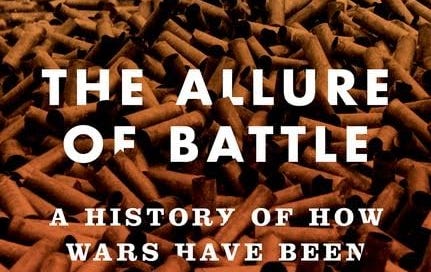



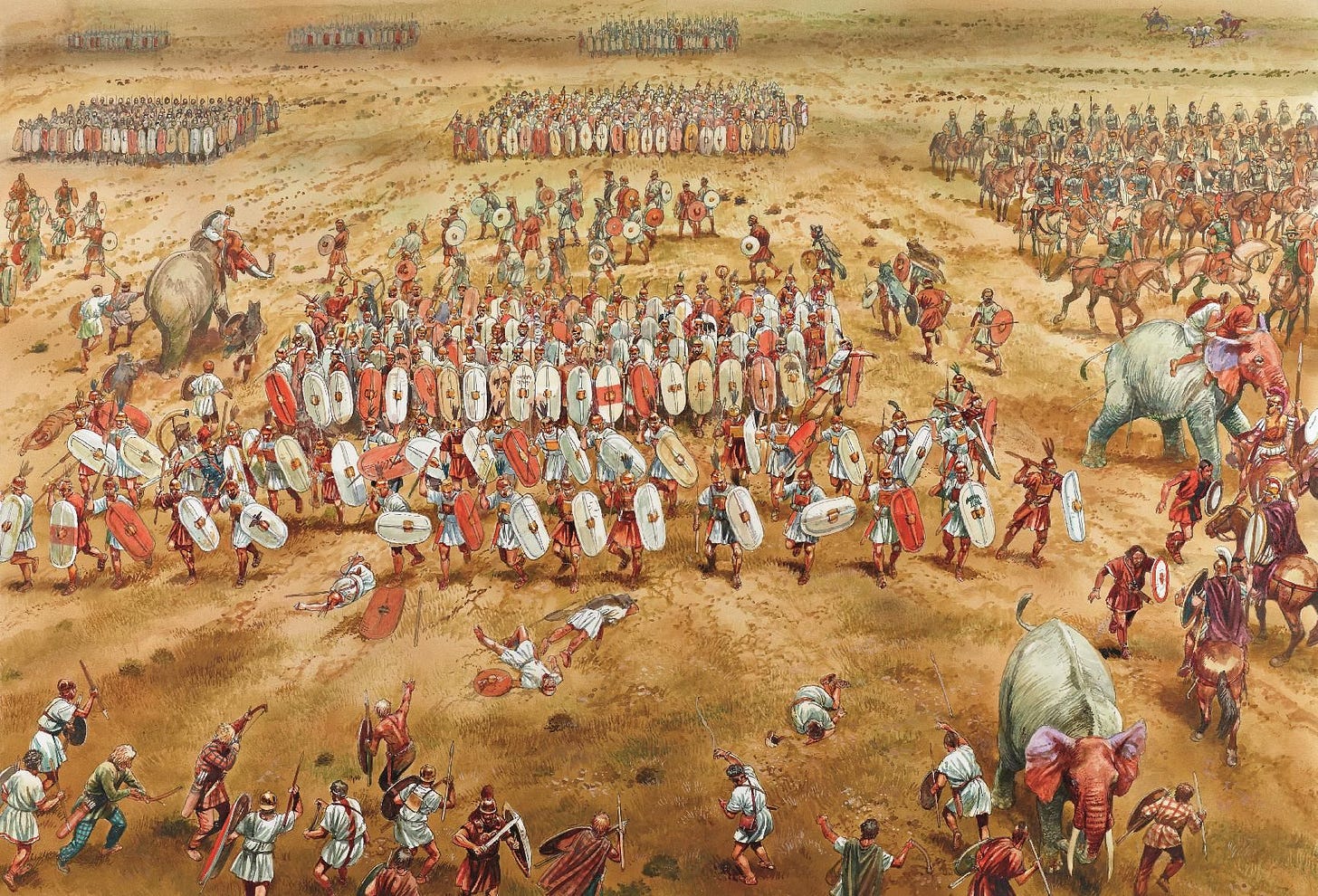
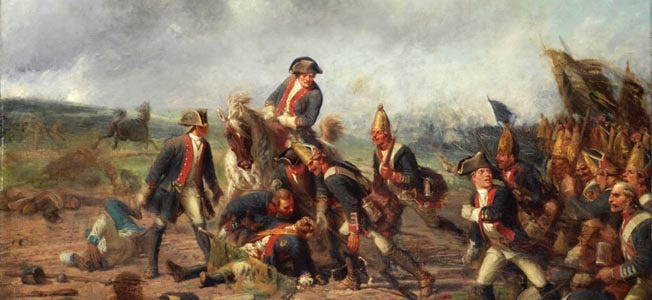
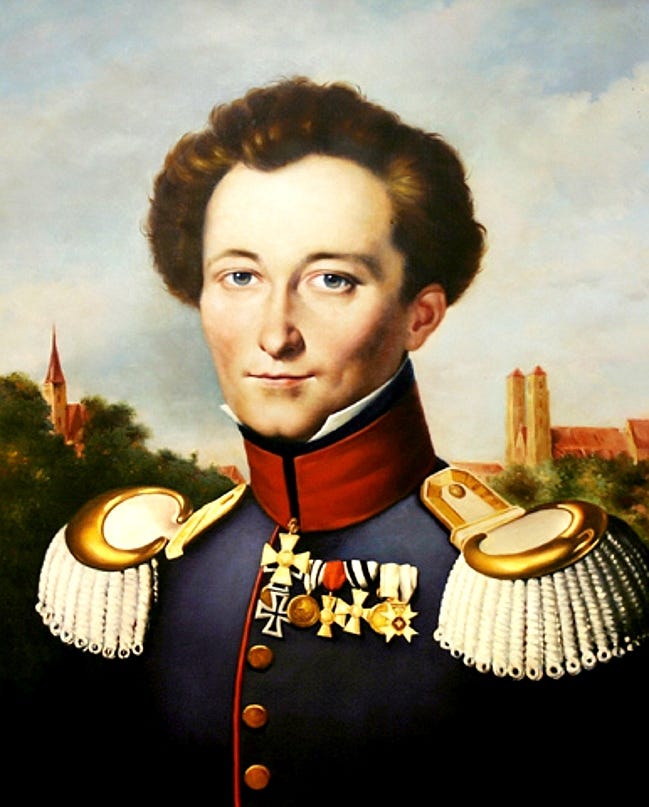
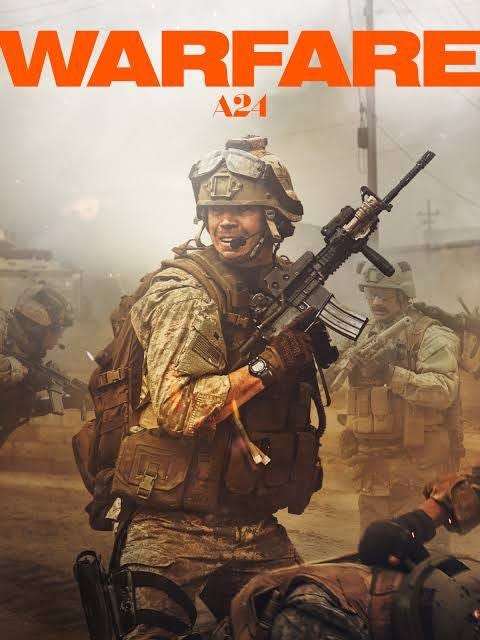
Nice review. It took me a while to get to Nolan, and ultimately found that he said in a substantially longer treatment what Citino had accomplished in his earlier work on operational art “Quest for Decisive Victory”
It seems like Nolan could so with some self-reflection. Trading the Carlylesque elevation of the individual for the primacy of vast and enduring forces is a tradition over a century old at this point, and the latter is every bit as seductive as the former.